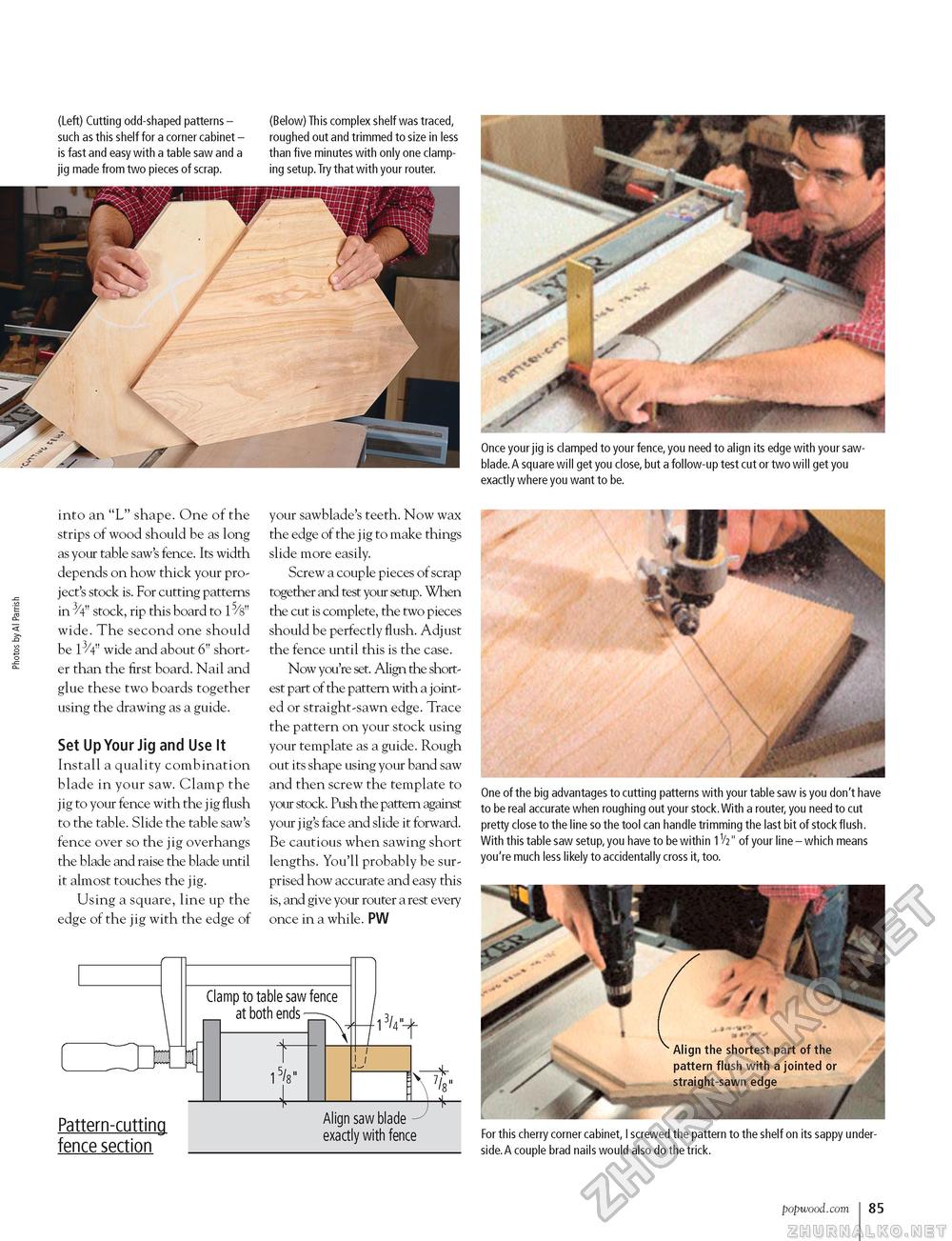Popular Woodworking 2003-02 № 132, страница 85
(Left) Cutting odd-shaped patterns -such as this shelf for a corner cabinet -is fast and easy with a table saw and a jig made from two pieces of scrap. (Below) This complex shelf was traced, roughed out and trimmed to size in less than five minutes with only one clamping setup.Try that with your router. into an "L" shape. One of the strips of wood should be as long as your table saw's fence. Its width depends on how thick your project's stock is. For cutting patterns in 3/4" stock, rip this board to 15/s" wide. The second one should be 13/4" wide and about 6" shorter than the first board. Nail and glue these two boards together using the drawing as a guide. Set Up Your Jig and Use It Install a quality combination blade in your saw. Clamp the jig to your fence with the jig flush to the table. Slide the table saw's fence over so the jig overhangs the blade and raise the blade until it almost touches the jig. Using a square, line up the edge of the jig with the edge of Clamp to table saw fence at both ends - iV i i Pattern-cutting fence section Align saw blade exactly with fence Once your jig is clamped to your fence, you need to align its edge with your saw-blade.A square will get you close, but a follow-up test cut or two will get you exactly where you want to be. your sawblade's teeth. Now wax the edge of the jig to make things slide more easily. Screw a couple pieces of scrap together and test your setup. When the cut is complete, the two pieces should be perfectly flush. Adjust the fence until this is the case. Now you're set. Align the shortest part of the pattern with a jointed or straight-sawn edge. Trace the pattern on your stock using your template as a guide. Rough out its shape using your band saw and then screw the template to your stock. Push the pattern against your jig's face and slide it forward. Be cautious when sawing short lengths. You'll probably be surprised how accurate and easy this is, and give your router a rest every once in a while. PW One of the big advantages to cutting patterns with your table saw is you don't have to be real accurate when roughing out your stock.With a router, you need to cut pretty close to the line so the tool can handle trimming the last bit of stock flush. With this table saw setup,you have to be within 1V2" of your line - which means you're much less likely to accidentally cross it, too. For this cherry corner cabinet, I screwed the pattern to the shelf on its sappy underside. A couple brad nails would also do the trick. 8 popwood.com 85 |








